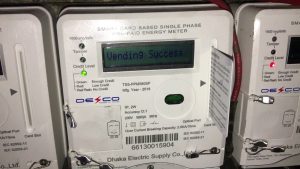– Jayant Menon and Anna Cassandra Melendez
The Association of Southeast Asian Nations (ASEAN) has just turned 50. Now well into middle age, it has some significant achievements under its belt.Indeed, ASEAN is almost a household name today, both within and beyond Asia.
Established in 1967, ASEAN’s initial focus was on politico-security issues. Its proactive engagement with the region has contributed to sustained peace and stability in Southeast Asia.
ASEAN’s greatest economic achievement has been tariff reduction. On average, ASEAN’s 10 member states have cut 96 percent of tariff lines to 0 percent, and this share is expected to reach 98.7 percent next year.
ASEAN’s commitment to open regionalism has seen its original member states voluntarily multi-lateralize their trade preferences by also offering them to non-members. Today, more than 90 percent of tariff lines offer the same rate to both members and non-members.
And more than 70 percent of intra-ASEAN trade travels at the Most-Favored-Nation rate of zero. Some of its more ambitious reform plans, however, have proven difficult to implement.
So, what does the future hold for ASEAN? More specifically, will it achieve its goal of regional economic integration?
Promoting integration in such a diverse region is a difficult challenge, and even harder today given the rising pressure globally to adopt inward-oriented trade policies.
The ASEAN Economic Community (AEC) was not realized by 2015 as initially hoped. Asean deferred 105 of the 506 required measures and moved the deadline to 2025.
A successor blueprint called the AEC Blueprint 2025 was adopted at the 27th ASEAN Summit in November 2015.
One objective of the AEC 2025 Blueprint is to complete the unfinished business of regional integration.
This includes trade liberalization, as low tariffs have been partially offset by a rise in non-tariff measures, which increased by more than three-fold between 2000 and 2015.
Pursuing behind-the-border reforms and policy harmonization is critical to ASEAN’s future economic prosperity.
But it has proven challenging, due largely to differing levels of development and the sometimes-divergent priorities of countries in the region.
The result has been delays in implementing specific initiatives. These include national single windows allowing traders to clear cargo by providing all required information to only one agency, and their integration into an ASEAN window covering the entire region.
Will AEC 2025 be enough to deliver a “deeply integrated and highly cohesive ASEAN economy” – as its vision statement proposes?
That will depend largely on whether Asean can do more to encourage compliance with its reform agenda among member states.
Where the preceding blueprint had four pillars, AEC 2025 has five broad goals to increase integration, competition, connectivity, inclusion and globalization.
It focuses on more difficult areas of reform such as reducing non-tariff measures, simplifying rules of origin determining where a product comes from and deepening trade facilitation measures.
There are plans to push ahead with a new ASEAN Trade in Services Agreement, including a review of flexibilities that allow ASEAN countries to implement commitments in line with their own priorities.
The new blueprint places greater emphasis on harmonizing standards and regulations. There are measures to raise productivity through innovation, technology and human resource development, intensify regional research and development and boost the region’s participation in global value chains.
ASEAN is keen to press forward with AEC 2025.
Its chances of delivering its agenda may depend on whether it can reboot its approach to galvanize the region and provide fewer opportunities for non-compliance.
It is important for the region’s future prosperity that ASEAN’s future declarations, action plans, and frameworks are translated into action.
The new blueprint explicitly defines mechanisms to ensure that member states comply with their commitments.
The AEC Council is designated as the principal body for enforcing compliance – a recognition of the need to overcome this challenge.
So far ASEAN has relied mainly on the “carrot” to encourage countries to pursue reform, but it may need to introduce the “stick” to forge further progress as the agenda deepens.
A good place to start might be to revamp its dispute settlement mechanism, which has never been used, so it offers a real deterrent against non-compliance.
If ASEAN can rise to the challenge, it will have played a key role in making the region’s economies more prosperous, inclusive and resilient.
It would also strengthen its position at the centre of a rapidly evolving regional architecture. – ADB




